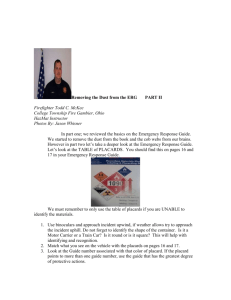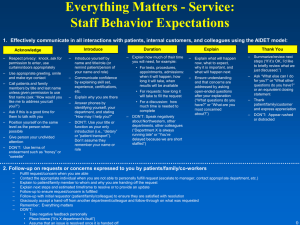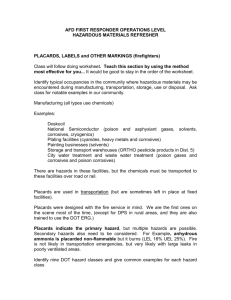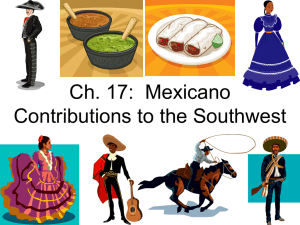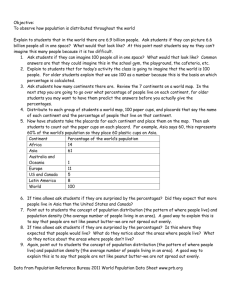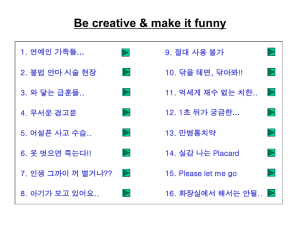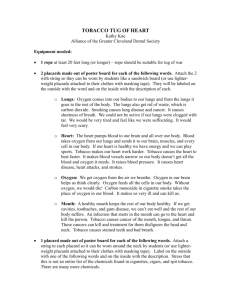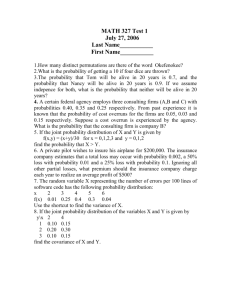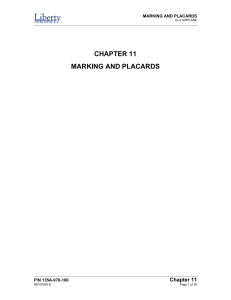Mexicano Contributions to the Southwest Lesson Plan
advertisement
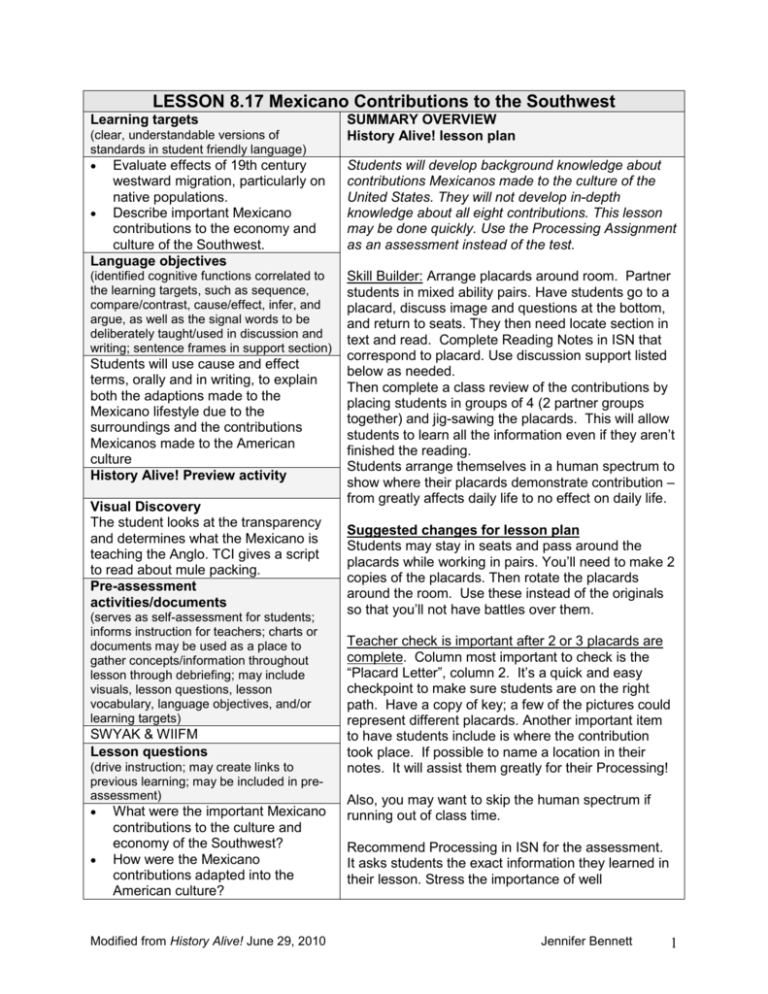
LESSON 8.17 Mexicano Contributions to the Southwest Learning targets (clear, understandable versions of standards in student friendly language) Evaluate effects of 19th century westward migration, particularly on native populations. Describe important Mexicano contributions to the economy and culture of the Southwest. Language objectives (identified cognitive functions correlated to the learning targets, such as sequence, compare/contrast, cause/effect, infer, and argue, as well as the signal words to be deliberately taught/used in discussion and writing; sentence frames in support section) Students will use cause and effect terms, orally and in writing, to explain both the adaptions made to the Mexicano lifestyle due to the surroundings and the contributions Mexicanos made to the American culture History Alive! Preview activity Visual Discovery The student looks at the transparency and determines what the Mexicano is teaching the Anglo. TCI gives a script to read about mule packing. Pre-assessment activities/documents (serves as self-assessment for students; informs instruction for teachers; charts or documents may be used as a place to gather concepts/information throughout lesson through debriefing; may include visuals, lesson questions, lesson vocabulary, language objectives, and/or learning targets) SWYAK & WIIFM Lesson questions (drive instruction; may create links to previous learning; may be included in preassessment) What were the important Mexicano contributions to the culture and economy of the Southwest? How were the Mexicano contributions adapted into the American culture? Modified from History Alive! June 29, 2010 SUMMARY OVERVIEW History Alive! lesson plan Students will develop background knowledge about contributions Mexicanos made to the culture of the United States. They will not develop in-depth knowledge about all eight contributions. This lesson may be done quickly. Use the Processing Assignment as an assessment instead of the test. Skill Builder: Arrange placards around room. Partner students in mixed ability pairs. Have students go to a placard, discuss image and questions at the bottom, and return to seats. They then need locate section in text and read. Complete Reading Notes in ISN that correspond to placard. Use discussion support listed below as needed. Then complete a class review of the contributions by placing students in groups of 4 (2 partner groups together) and jig-sawing the placards. This will allow students to learn all the information even if they aren’t finished the reading. Students arrange themselves in a human spectrum to show where their placards demonstrate contribution – from greatly affects daily life to no effect on daily life. Suggested changes for lesson plan Students may stay in seats and pass around the placards while working in pairs. You’ll need to make 2 copies of the placards. Then rotate the placards around the room. Use these instead of the originals so that you’ll not have battles over them. Teacher check is important after 2 or 3 placards are complete. Column most important to check is the “Placard Letter”, column 2. It’s a quick and easy checkpoint to make sure students are on the right path. Have a copy of key; a few of the pictures could represent different placards. Another important item to have students include is where the contribution took place. If possible to name a location in their notes. It will assist them greatly for their Processing! Also, you may want to skip the human spectrum if running out of class time. Recommend Processing in ISN for the assessment. It asks students the exact information they learned in their lesson. Stress the importance of well Jennifer Bennett 1 Additional background building (streaming video segments, DVD, map review, read aloud of a related piece of fiction, etc.) constructed sentences. Coloring the icons elicits more care. Flexible grouping pattern of the lesson Whole class: direct teaching of the introduction/read aloud, the preview, and the Jigsaw of the last 2 or 3 of the contributions (Skill Builder) Partners: WRAPP reading, ISN reading notes, reading of the chapter Independent: Processing Key content vocabulary (assessed) adapt tradition heritage irrigation adobe READING SUPPORT Lesson-specific instructional supports http://groups.teachtci.com/ * see Enrichment Plan for Compacting/Extensions Suggested Turn and Talks Focus pages/paragraphs for Cross-content vocabulary for Introduction teacher guided for ELLs/students who Interactive Read-Aloud reading group could benefit After the second paragraph, have students talk about how the Mexicanos’ citizenship, property and language aren’t protected. Under each section read the first paragraph or two; this will support the ISN work for the fourth column, “Why Contributions Were Used”. WRITING SUPPORT Lesson-specific instructional supports http://groups.teachtci.com/ * see Enrichment Plan for Compacting/Extensions Sentence frames for parts of the lesson Use the terms: One reason for Due to DISCUSSION SUPPORT Lesson-specific instructional supports http://groups.teachtci.com/ * see Enrichment Plan for Compacting/Extensions As students read and process the contributions of the Mexicanos, they can use cause and effect terms. Example: One reason for the development of irrigation in the West is that it was dry for six months of the year. FORMATIVE ASSESSMENT (for student and teacher use) “Check for understanding” Checkpoints in Student Questions for points during activities Interactive Notebook exit and entrance slips Modified from History Alive! June 29, 2010 Jennifer Bennett 2 Processing Assignment After students have completed Exit slip: What two 2 to 3 placards check to make contributions did the sure the notes are accurate. Mexicanos make to American culture? Entrance slip: How do Mexicano contributions affect your daily life? REVIEW Games Other (also serves as a formative assessment) Processing ties into the skill builder and reinforces learning. High learners may become more concerned about the location aspect for some of the icons; if they have time, encourage them to research it. LESSON ASSESSMENT Processing Assignment Modified from History Alive! June 29, 2010 Jennifer Bennett 3

